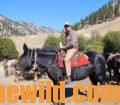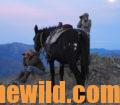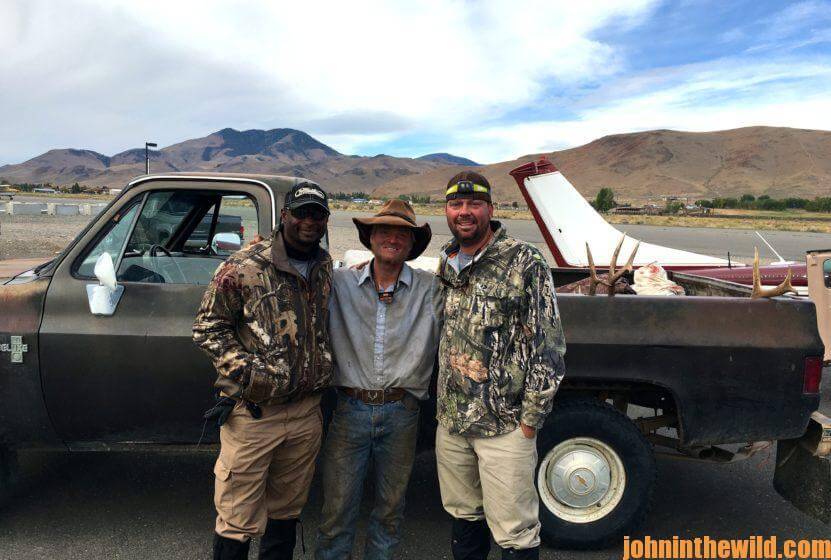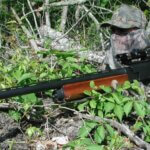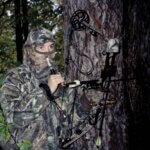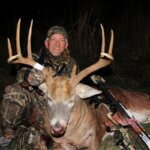Editor’s Note: Jamie Spencer from Brentwood, Tennessee, wanted more than just to harvest an elk. He wanted a backcountry adventure. So, he chose Mile High Outfitters in Challis, Idaho
(https://www.milehighoutfitters.com/) and ([email protected]), 208-879-4500.
 When we arrived at our base camp, we saw two giant, white, army-looking tents called sheepherders tents’. Not only did they keep out the rain and the weather, but both were equipped with wood burning stoves, which proved to be a Godsend. Inside one tent were the cots where we slept, and the other sheepherders’ tent served as the kitchen. At night and in the early mornings before daylight, the temperature would drop to 30 degrees Fahrenheit. Rain fell two days, which seemed to make the weather a little cooler. I’d wear my rain gear, but then some days, later in the morning, the temperature would be 70 degrees. Then I’d be hunting in a t-shirt. So, I packed to dress in layers with a base layer, an insulating layer and a stormproof layer (warm rain suit). My base layer was polypropylene made by Patagonia (https://www.patagonia.com/shop/baselayers) that wicked moisture away from my skin and kept me warm. Then I wore Carhartt pants (https://www.carhartt.com/) and a Mossy Oak shirt (https://store.mossyoak.com/) and put my rain suit on top of that. I had a thin pair of Under Armor polypropylene liner gloves (https://www.underarmour.com/) and wore Cabela’s Gore-Tex gloves (https://www.cabelas.com/) on top of them when the weather was cool. Most of the time during the day I kept the thicker, warmer Cabela gloves in my backpack and just wore the camouflage liners. I wear those liners when I hunt in my home state of Tennessee. I wore one of the new high-tech bandanas around my neck that I could pull up over my nose and pull up the back part of the bandana to cover my ears, neck, and back of my head and a camouflage baseball style hat. For boots. I chose Irish Setter (https://www.irishsetterboots.com/), and I chose Thorlo
When we arrived at our base camp, we saw two giant, white, army-looking tents called sheepherders tents’. Not only did they keep out the rain and the weather, but both were equipped with wood burning stoves, which proved to be a Godsend. Inside one tent were the cots where we slept, and the other sheepherders’ tent served as the kitchen. At night and in the early mornings before daylight, the temperature would drop to 30 degrees Fahrenheit. Rain fell two days, which seemed to make the weather a little cooler. I’d wear my rain gear, but then some days, later in the morning, the temperature would be 70 degrees. Then I’d be hunting in a t-shirt. So, I packed to dress in layers with a base layer, an insulating layer and a stormproof layer (warm rain suit). My base layer was polypropylene made by Patagonia (https://www.patagonia.com/shop/baselayers) that wicked moisture away from my skin and kept me warm. Then I wore Carhartt pants (https://www.carhartt.com/) and a Mossy Oak shirt (https://store.mossyoak.com/) and put my rain suit on top of that. I had a thin pair of Under Armor polypropylene liner gloves (https://www.underarmour.com/) and wore Cabela’s Gore-Tex gloves (https://www.cabelas.com/) on top of them when the weather was cool. Most of the time during the day I kept the thicker, warmer Cabela gloves in my backpack and just wore the camouflage liners. I wear those liners when I hunt in my home state of Tennessee. I wore one of the new high-tech bandanas around my neck that I could pull up over my nose and pull up the back part of the bandana to cover my ears, neck, and back of my head and a camouflage baseball style hat. For boots. I chose Irish Setter (https://www.irishsetterboots.com/), and I chose Thorlo  socks (https://www.thorlo.com/). I always carried an extra pair of dry socks in a Ziploc bag, so if my feet got wet, I had dry socks to wear the rest of the day.
socks (https://www.thorlo.com/). I always carried an extra pair of dry socks in a Ziploc bag, so if my feet got wet, I had dry socks to wear the rest of the day.
We were up at 4:30 am and enjoyed a great breakfast of eggs, sausage, toast, biscuits, gravy and coffee. We always looked forward to breakfast and to dinner at night because when we came in just a little before dark or after dark and dog-tired, having a good, hot meal was really a luxury. After breakfast, we would wrangle the horses and get them saddled-up. Then we’d go to a vantage point where we could start glassing for elk at first light. We would stay on the top of the mountain, until we heard elk bugle or spotted a herd of elk. I was hunting with a Browning X-Bolt 7mm Mag (https://www.browning.com/). We called our guide, Cowboy Matt. We had two hunters for one guide. We would ride 30 minutes to an hour every morning in the dark, before we reached a point where we could watch the sun come up and glass for elk. The hunt was seven days long, and during the hunt I was fortunate enough to hear 8 – 12 elks’ bugle.
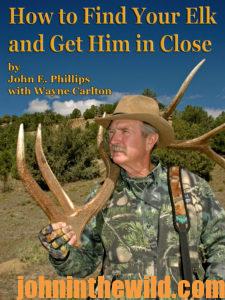 To learn more about hunting elk, check out John E. Phillips’ book, “How to Find Your Elk and Get Him in Close,” available in Kindle, print and Audible versions at http://amzn.to/17ENNqK.
To learn more about hunting elk, check out John E. Phillips’ book, “How to Find Your Elk and Get Him in Close,” available in Kindle, print and Audible versions at http://amzn.to/17ENNqK.
Tomorrow: Taking a Bear While on a Backcountry Elk Hunt

